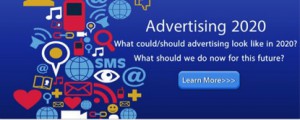I have recently been looking at the Wharton Future of Advertising Program http://wfoa.wharton.upenn.edu/ad2020/ which has invited people to nominate thought leaders from numerous disciplines to provide their insights into what advertising might look like by the year 2020.
I immediately went to look at the contributions from Africa, of which there are two. The first is very straightforward, understand your consumer. Really understand them, “their values, dreams, aspirations, wishes and fears”. Only once you know this can you “serve” them effectively. Difficult to argue with.
The second Africa article takes a completely different approach and looks at “Brand Feelings”. It argues that as broadcasting increasingly becomes narrowcasting and the choices of medium for a message more scattered, the amount of segmentation within a market will increase. Therefore we will need to understand a greater number of variables about our target markets – for example people’s feelings (and when they are feeling what) to target our narrowcast messages in the right way.
This had me thinking about the massive shift in communication mediums to social media and access to information through phones – especially within Kenya, and the barriers to access which people currently face. It is a fact that has been shared before, that people from low incomes, when making choices about their spending will consider an airtime purchase alongside food.
Given the stark reality of this choice and the fact that the extreme poverty factors which create this choice are unlikely to have disappeared by 2020 maybe marketers need to consider how to reduce the barriers to access of information (and their advertising). Currently YouTube place advertising at the beginning of their free content – however this assumes internet access in the first place. What if companies provided the internet access itself (maybe through a portal in a similar way to some hotels). You could either provide free access to specific sites of interest to your target group, for specific shows or for internet access in general. In return users agree to watch / participate in your advertising and / or better still agree to share data about their internet access habits to further inform your narrowcasting marketing.
While I know there are challenges to this approach, for example the user must have an internet enabled phone and fast enough internet speeds, for the purposes of this blog we will assume these are in place. For me, facilitating access to the internet offers two things:
- the opportunity to ensure your messages reach your consumer
- the ability to refine the information you have about your consumer to further target your segmentation and improve your future approach to narrowcast marketing.
Sam Crosthwaite – Client Service Manager


